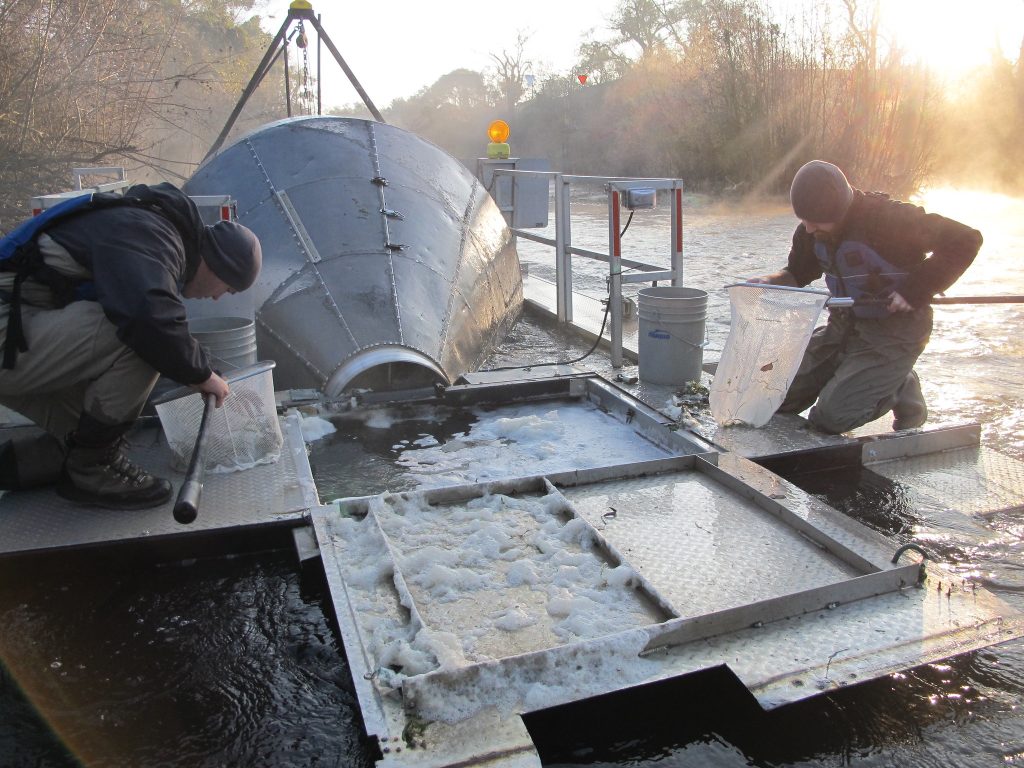


Rotary screw traps have become an essential tool for salmonid lifecycle monitoring throughout the western United States. FISHBIO professionals have operated rotary screw traps to assess downstream migration timing and abundance of juvenile salmon and steelhead for more than 20 years. Data from these traps can help track changes in fish abundance in response to reservoir operations, river flow, and other environmental conditions.
A rotary screw trap consists of a large cone suspended between two floating pontoons. River flow rotates the cone and funnels a portion of the migrating fish into an underwater holding tank at the back of the trap. FISHBIO personnel monitor the traps daily during the migration season to remove debris and count, measure, and release the collected fish. Since the traps only sample a portion of the river, we must regularly measure the trap’s efficiency to extrapolate from our collection totals to the estimated size of a given fish population. Annual abundance estimates of juvenile fishes are critical for salmonid life cycle modeling and trying to understand the factors that limit population abundance.